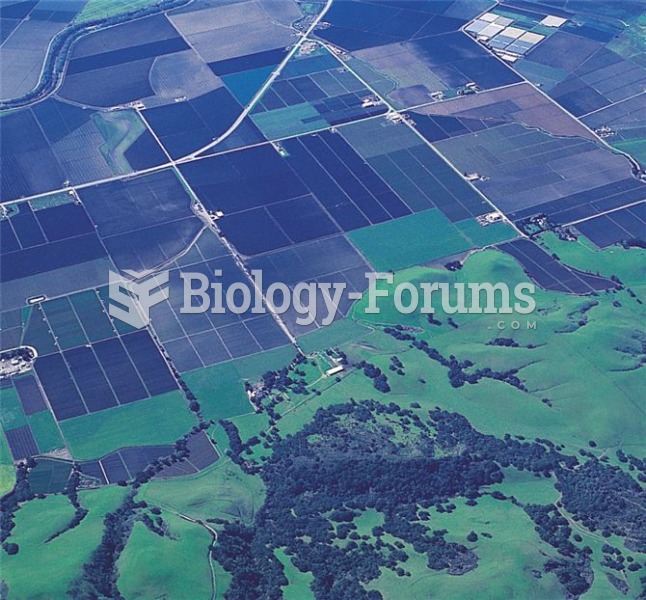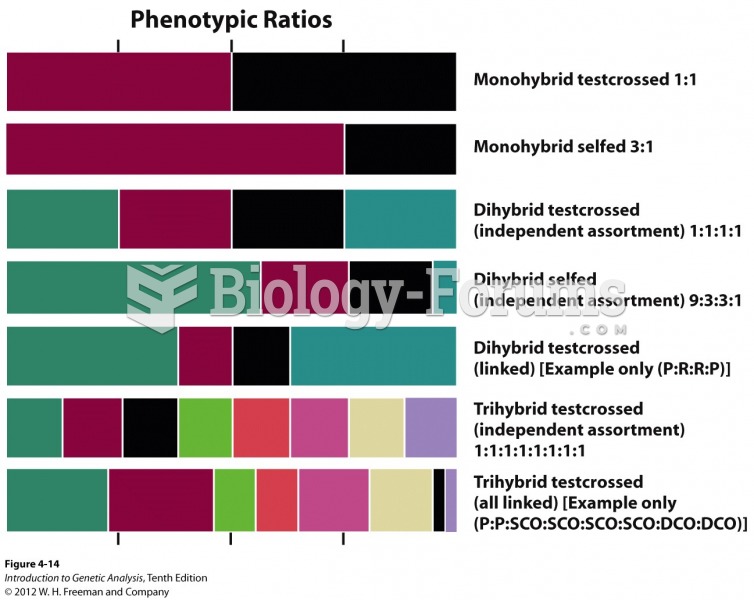|
|
|
Drying your hands with a paper towel will reduce the bacterial count on your hands by 45–60%.
Patients who cannot swallow may receive nutrition via a parenteral route—usually, a catheter is inserted through the chest into a large vein going into the heart.
After 5 years of being diagnosed with rheumatoid arthritis, one every three patients will no longer be able to work.
The first-known contraceptive was crocodile dung, used in Egypt in 2000 BC. Condoms were also reportedly used, made of animal bladders or intestines.
Many supplement containers do not even contain what their labels say. There are many documented reports of products containing much less, or more, that what is listed on their labels. They may also contain undisclosed prescription drugs and even contaminants.
 Boundaries within landscapes created by human activity (background) and natural environmental gradie
Boundaries within landscapes created by human activity (background) and natural environmental gradie
 Vertebral compression Fractures of the spine (vertebra) can cause severe ”band-like” pain that radia
Vertebral compression Fractures of the spine (vertebra) can cause severe ”band-like” pain that radia





